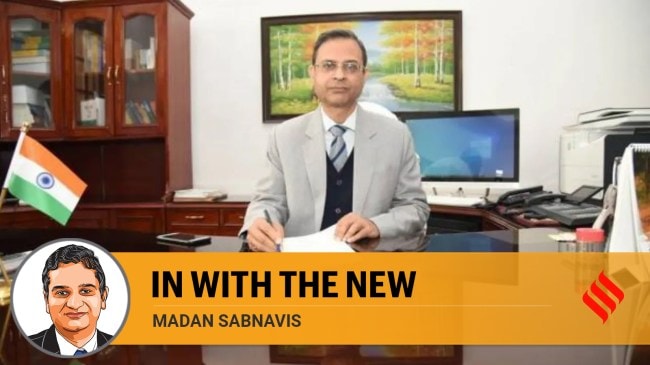Opinion Sanjay Malhotra has his task cut out
The new RBI governor has several challenges before him, from financial regulation, MPC’s conduct, liquidity management and Trump’s election to greening the financial system and internationalising the rupee
 Sanjay Malhotra takes over at a time when the global economy is in flux.
Sanjay Malhotra takes over at a time when the global economy is in flux. The poet Alfred Tennyson said, “The old order changeth, yielding place to new”, which befits the change that Mint Street will witness as Sanjay Malhotra takes over as Governor of RBI. Shaktikanta Das had a stellar stint at the central bank, navigating it calmly and unobtrusively through choppy times. His decisions were appropriate and timely, and the policies were consultative, which helped avoid shocks.
Malhotra takes over at a time when the global economy is in flux. While India stands tall, it must ensure that it does not become complacent. Anticipating changes globally and pivoting monetary policy from here on makes the job interesting. Against this background, these are the main areas that need supervision.
The first pertains to maintaining the integrity of the financial system. Financial regulation is a nebulous task because the RBI has to be proactive to ensure that the system does not falter. Here is an analogy from the roadside to better explain this: Signals are set up to ensure that discipline is maintained, which in our case is the book of regulation. However, the central bank has to keep a check in all directions to anticipate possible mishaps as well as keep an eye on those who flout rules. RBI has done this job very well for the last six years and it must continue to do so.
Second, the conduct of the monetary policy committee would be of interest. Three external members have just changed in October. With a new Governor and potentially a new Deputy Governor in February, there will be five new members. As the committee will be looking to cut the repo rate, the timing and magnitude during this cycle will be something to be observed closely.
Third, the approach to managing liquidity. In the last couple of years, the RBI has used the LAF framework (liquidity adjustment facility) involving VRR and VRRR to balance liquidity. There has been a change this time with it opting to cut the CRR. The OMO option also exists in its armoury. The approach taken to ensure systemic liquidity will be observed closely by the market. Liquidity seems to have been affected considerably by the quantum of government cash balance held with the RBI. Coming from the Ministry, which deals with the budgetary flows, the Governor’s approach to handling liquidity will add value.
Fourth, starting January, when a new president will take office in the US, there are expectations of a jingoistic approach to policy. This will have an impact on interest rates, the flow of funds, currency, and prices among other things. Managing currency fluctuations is another major task for the RBI Governor. The rupee has been well managed recently to ensure less volatility — this could have been the reason for the decline in forex reserves in the last couple of months. The management of volatility in the forex market will be another area that will merit attention.
Fifth, the central bank has been seamlessly carrying out its functions as the government’s banker for the last 10 years. With years of experience in the Finance Ministry that handles budget formulation and implementation, Malhotra is in a good position to fine-tune operations, if required.
Lastly, a lot of work needs to be done in conjunction with other financial regulators to take the “green financial system” to the next level. Green bonds, deposits and loans among others would have to be pushed aggressively as the country moves to meet its stated goals. This would be high on the priority chart of the Governor.
Beyond these conventional functions, there are two ticklish issues that the RBI has to address. The first is the acceptance or rejection of cryptocurrency. Crypto has become one of the most popular financial instruments in many countries. Should India embrace the same and prepare a roadmap for its acceptance? The stance so far has been unambiguous “no”.
The other issue is on the internationalisation of the rupee. Calls for de-dollarisation are growing. The RBI has never spoken of it and the use of the rupee for global transactions has been limited to bilateral trade. But there would be a need to steer the diplomatic boat here.
Markets will closely be watching the RBI’s moves to gauge the thought process of the new Governor.
Sabnavis is chief economist, Bank of Baroda and author of Corporate Quirks: The Darker Side of the Sun. Views are personal






